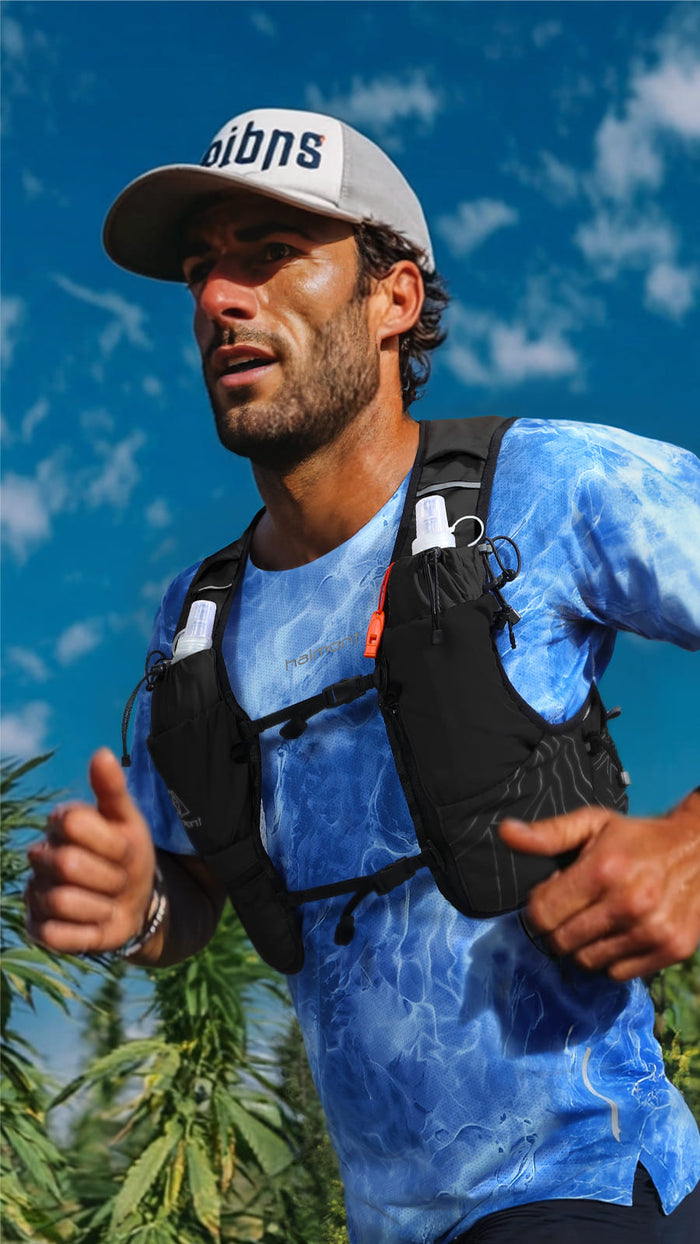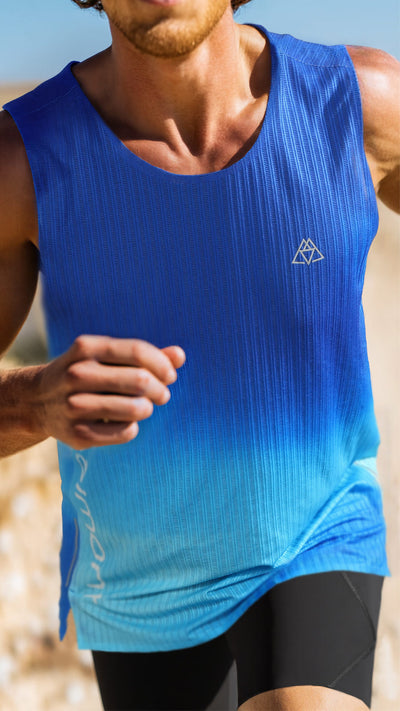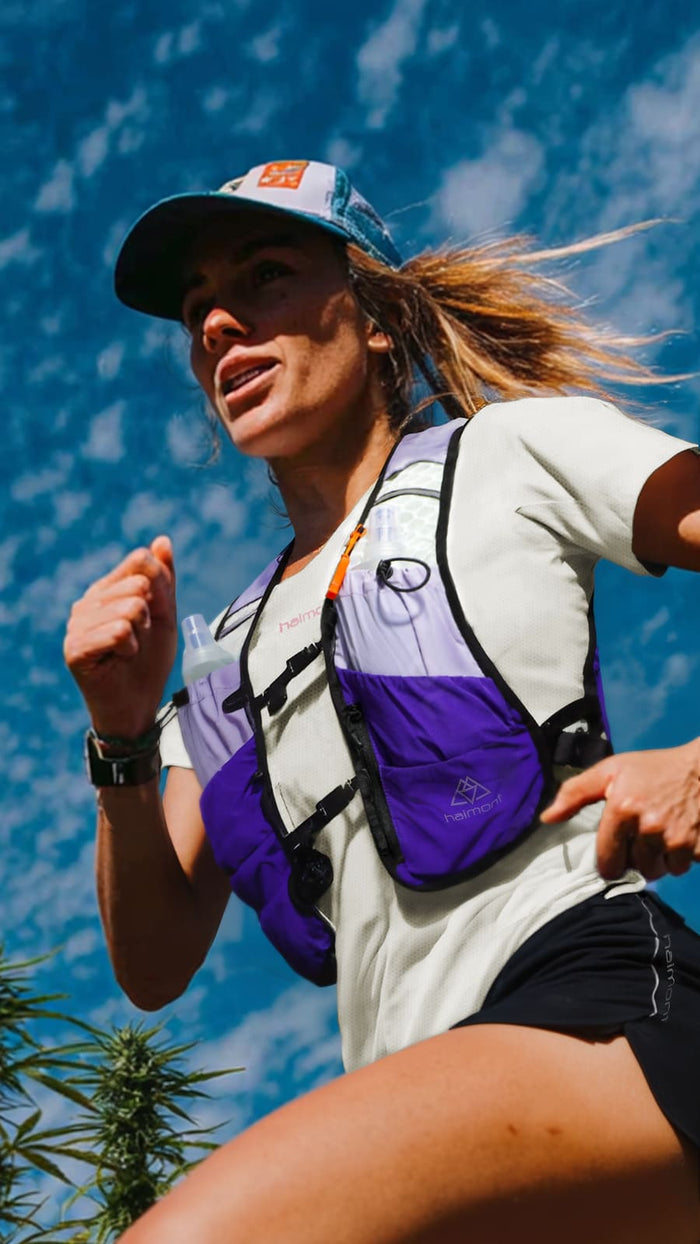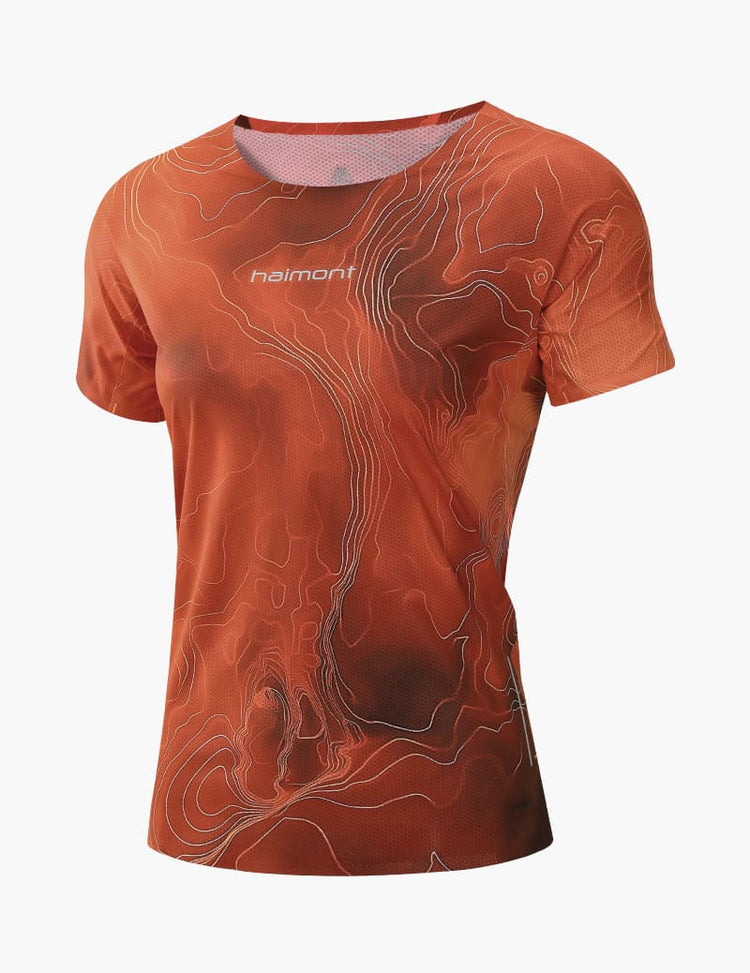Table of contents
The 2026 trail running season in the United States is destined to be extraordinary. With the full expansion of the UTMB World Series and the return of several historic races, the U.S. trail running calendar is about to enter its most exciting and event-packed era. From California’s Canyons Endurance Runs and Colorado’s Leadville 100, to the legendary Western States Endurance Run (WSER), nearly every weekend from spring through fall will feature a highlight event.
For passionate trail runners, 2026 will not only test endurance and willpower—it will also embody the evolution of global trail running culture and race formats. However, this “golden season” means both opportunity and challenge. Qualification systems, point requirements, lottery rules, and increasing competitiveness are all reshaping the landscape.
If you want to stand at the starting line of your dream race in 2026, you need to start preparing now—from training plans to race registration strategies to qualification race choices.
Why Start Planning for the 2026 Season Now?
You might ask, “Isn’t it too early to talk about 2026?”
The answer: Absolutely not.
For runners aiming to compete in top-tier U.S. races, preparation has already begun—or should begin right now. There are three key reasons:
Shifting Race Landscape: The Integration of the UTMB World Series
Since the UTMB World Series officially included North American races in 2022, the U.S. trail running ecosystem has undergone a dramatic transformation. Events such as Canyons 100K (California), Kodiak Ultra Marathons (Big Bear Lake, CA), and Speedgoat by UTMB (Utah) have become “Golden Ticket” races—direct gateways to Mont-Blanc’s UTMB events.
These races are no longer just qualifiers; they are bridges between American runners and the world’s top mountain running circuits. To compete in elite European events like UTMB, CCC, or OCC in 2026, athletes must now understand the new Running Stones qualification system. The U.S. trail scene is no longer an isolated stage—it’s a crucial node in the global trail-running network.
Increasing Competition Intensity
Within the U.S. trail community, the Western States Endurance Run (WSER) and Hardrock 100 stand as twin pillars of prestige—and both are notoriously difficult to enter.
Take the 2025 Western States as an example. According to the WSER official lottery statistics (source):
- 9,993 runners entered the lottery.
- 369 spots were available for the main race.
- After accounting for automatic entries (e.g., top 10 finishers, volunteers, etc.), only about 260 slots were open for the lottery.
That means the odds of selection were roughly 2.6% (260 ÷ 9,993). Even with weighted tickets accumulated over years of applications, winning a spot remains a monumental challenge.
The Hardrock 100 Endurance Run is no less competitive. According to official Hardrock documents (source):
- Around 3,020 applicants entered the lottery.
- Only 146 total entries were accepted (including automatic and lottery selections).
- The average acceptance rate was 4.8%.
While that may sound higher than WSER, Hardrock’s Veterans / Never / Else pool system makes it even harder for first-time applicants—some face probabilities below 2%.

Overall, entry numbers for both races continue to climb year after year. This means runners must not only conquer the trails—they must also face the harsh reality that “the lottery itself is the first race.”
The Necessity of Systematic Training
Success in a 100-mile race is not merely about fitness accumulation—it’s a comprehensive system of long-term training, nutrition adaptation, psychological conditioning, and equipment testing.
According to TrainingPeaks and Jason Koop (Training Essentials for Ultrarunning, 2nd Edition, 2021), a complete training cycle typically spans 6 to 9 months, including at least two phases of specific endurance development and one simulation race.
If your goal is to compete in Canyons 100K or Western States 100 in the spring of 2026, the ideal time to start building your training base is November–December 2025.
Early preparation allows you to find a balance between effort and recovery rather than being forced into reactive training by the race calendar.
Thus, Haimont aims to help runners construct a comprehensive roadmap for the 2026 U.S. trail running season—from spring to winter, from UTMB qualifying races to WSER lotteries. We’ll walk you through key event timelines, qualification requirements, and training rhythms.
Whether you’re a newcomer to trail running or a veteran eyeing a 100-mile challenge, you’ll find your rhythm for the 2026 season here.
Core Races on the 2026 U.S. Trail Running Calendar
From classic 50Ks to epic 100-milers and multi-day events, this is a comprehensive guide to trail races stretching from spring through fall—across the mountainous landscapes of the American West.
| Month | Event | Location | Distance | Elevation Gain | Key Features |
|---|---|---|---|---|---|
| March | Chuckanut 50K | Washington | 50 km | 1,500 m | Season opener, forest and mud terrain |
| April | Lake Sonoma 50 Mile | California | 50 mi | 3,000 m | Golden Ticket Race |
| April | Canyons by UTMB | California | 50K–100M | 6,400 m | UTMB Series points race |
| May | Quadrock 50/100 | Colorado | 50–100 mi | 3,300 m | High-altitude technical course |
| June | Western States 100 | California | 100 mi | 5,500 m | World-class 100-mile event |
| June | Bighorn 100 | Wyoming | 100 mi | 5,300 m | Rugged mountain course |
| July | Hardrock 100 | Colorado | 100 mi | 10,000 m | Extreme altitude challenge |
| August | Leadville Trail 100 | Colorado | 100 mi | 4,500 m | Classic mining town race |
| September | The Bear 100 | Utah / Idaho | 100 mi | 6,700 m | Autumn foliage course |
| October | Moab 240 | Utah | 240 mi | 8,800 m | Multi-terrain ultra-endurance event |
| October | Javelina Jundred | Arizona | 100 mi / 100K | 2,100 m | Season finale, desert festival atmosphere |

How to Structure Training and Race Planning for 2026
Scientific planning of your training and race rhythm allows continuous improvement throughout the season while minimizing injury risk and maintaining motivation. The 2026 trail season can be divided into four progressive phases, each with its own core goals and recommended race types.
January–March: Base Endurance & Strength Foundation
Core goal: Build a strong aerobic base, reinforce lower-body and core strength, and prepare for longer runs in spring.
Training focus:
- 3–4 sessions per week of low-intensity Zone 2 running (60–70% max heart rate)
- Add strength training (glutes, quads, hamstrings, core stability)
- Include cross-training like hiking or indoor cycling
Recommended races:
- 25–30 km regional trail races (e.g., Montara Hill Climb in CA, Oregon Trail Mix 25K)
- Use these to simulate race effort and test base-level endurance.
Mental strategy: Establish a “sustainable rhythm.” Avoid ramping up mileage or intensity too soon, which often leads to fatigue or burnout.
April–June: Specific Conditioning & Mid-Distance Practice Phase
Core goal: Transition to climbing and descending endurance, rhythm control, and practice mid-distance racing.
Training focus:
- Add one long climbing run per week (≥1,000 m vertical gain)
- Practice downhill leg conditioning—focus on control and impact absorption
- Simulate nutrition and gear use (e.g., test the Haimont 8L Trail Vest during long runs)
Recommended races:
- Chuckanut 50K (March) or Lake Sonoma 50 Mile (April)
- Canyons by UTMB (April) as a UTMB points race or qualifier for summer 100-milers.
Objective: Complete these races smoothly with consistent pacing and effective fueling to build specific confidence.
July–September: Peak Conditioning & Environmental Adaptation Phase
Core goal: Simulate race-day environments—heat, altitude, and distance—to form a complete “race rhythm.”
Training focus:
- Heat adaptation: Train during midday or in warm environments to test hydration and cooling strategies.
- Altitude training: Schedule 1–2 camps or long runs above 2,000 m.
- Long runs: 50–80 km endurance sessions once per month, including night running and continuous elevation practice.
- Test hydration, gear, and fueling systems under race-like conditions.
Recommended races:
- Western States 100 (June)
- Leadville Trail 100 (August)
- Hardrock 100 (July)
Mental focus: Practice visualization, emotional control, and calm response under pressure. “Crisis management” skills are as vital as physical fitness.
October–December: Recovery, Reflection & Season Wrap-Up
Core goal: Conclude the racing year with late-season events while systematically reviewing training and preparing for 2027 goals.
Training focus:
- Maintain moderate-intensity running (Zone 2–3 HR)
- Incorporate flexibility and core training to aid recovery
- Record notes on nutrition, gear, and mental responses for future reference
Recommended races:
- Javelina Jundred (October)
- The Bear 100 (September) or Moab 240 (October)
Use these as your season finale—a symbolic “closure race” to celebrate progress.
Mental tips:
- Keep a post-race reflection journal summarizing what worked: training patterns, gear performance, physical feedback, and mindset evolution.
- Use insights to set refined goals for the next season.

Gear and Logistics Preparation
The philosophy of trail running has never been “carry more,” but rather “carry right.”
On a 100-kilometer mountain trail, even subtle differences in weight, layout, and functionality can determine whether you keep moving or are forced to stop. To “run light and stay safe” means mastering the balance between minimalism and preparedness.
Technical Shirt: Breathability + Antibacterial + Quick-Dry
In races like Canyons, Lake Sonoma, or Javelina, temperatures often soar above 35 °C (95 °F). Such humid heat affects not only performance but also increases the risk of chafing and overheating.
Professional Recommendations:
- Choose fabrics with high breathability and fast-drying capability.
- Look for odor-resistant, antibacterial technologies (e.g., Polygiene®) to reduce odor buildup during long hours.
- Mesh panel construction enhances sweat evaporation.
- Seamless design minimizes friction and improves long-term comfort.
Recommended Gear: Haimont Lightweight Trail Running Tee
- Built with Italian SPACE3D air mesh and seamless lamination technology for both structure and skin-level ventilation.
- Polygiene® antibacterial treatment keeps you fresh and odor-free.
- Suitable for both spring training and hot summer races—especially Canyons and Javelina stages.
Hydration Vest: Your “Second Pair of Lungs”
A trail-running vest is more than a storage tool—it’s an extension of your fueling system. It carries not only water and nutrition but also your safety and rhythm on the trail.
How to Choose the Right Capacity
| Race Type | Recommended Capacity | Description |
|---|---|---|
| Training / 30–50 K | 5 L – 8 L | Lightweight, efficient, flexible |
| 50 K–100 K | 8 L – 10 L | Balanced storage and stability |
| 100 mi+ / Multi-day | 10 L – 15 L | Endurance-focused, room for backup gear |
Professional Design Considerations
- Front dual soft-flask pockets for quick hydration access
- Layered back compartment for separating nutrition, clothes, and wind protection
- Elastic shoulder straps that contour to the chest and minimize bounce
- Reflective elements and night-run attachments for safety in low-light conditions
Recommended Gear: Haimont Ultra Trail Vest Series
The Haimont Ultra Trail Vest is lightweight, stable, and designed for a zero-bounce fit. Multiple front pockets allow quick access to nutrition, while the rear compartment supports a hydration bladder and extra gear. The mesh on the shoulder straps and back conforms to your running posture, reducing movement. Reflective strips and nighttime attachment points enhance safety. Available in multiple capacities (5 L, 8 L, 10 L), it meets the needs of different race stages—making it a professional trail running vest that balances efficiency, comfort, and safety.
- Haimont Ultra 10 L Running Vest: Dual-layer storage system + reflective buckles increase nighttime running safety by 30%. Weighing only around 193 g, it combines an ultralight design with a cleverly organized 10 L storage space. The front eight pockets can simultaneously hold two soft flasks, energy gels, and a phone. This vest has been field-tested and highly rated by participants in the 2025 Gran Vuelta Valle del Genal in Spain (55 K and 130 K courses).
- Haimont 8 L Pro Running Vest: Lightweight structure—size S weighs only 235 g, 25% lighter than standard 8 L vests. It offers 15 well-organized pockets for energy gels, GPS devices, and emergency clothing, including two 500 ml soft flask pockets and a 2 L hydration bladder compartment, providing over 8 hours of continuous hydration without refill.
- Haimont Ultra 5 L Hydration Running Vest: Weighing just 208 g (7.34 oz)—30% lighter than standard vests—yet featuring 11 pockets, including two 500 ml soft flask pockets. Ideal for storing energy gels, phones, and emergency gear. This vest redefines ultralight performance and is the perfect choice for short-distance trail races.
Footwear: Terrain Match & Downhill Control
Core Principles:
- For technical mountain terrain (e.g., Hardrock, Quadrock): choose shoes with strong traction and moderate sole stiffness.
- For fast, runnable courses (e.g., Lake Sonoma, WS100): choose lightweight, breathable models with balanced cushioning.
- For desert races (e.g., Javelina, Moab): prioritize heat-resistant, sand-repelling uppers; use gaiters if necessary.
Expert Advice:
- Always race in well-broken-in shoes—never new pairs.
- For 100-mile events, prepare two pairs and plan a mid-race shoe change.
Mandatory Gear Checklist
The mandatory gear list for UTMB and its affiliated races defines the minimum safety standard—non-negotiable for responsible participation.
While specific requirements vary by distance and location, the most common include:
- Waterproof jacket with hood (≥ 10,000 mm waterproof rating)
- Long-sleeve insulating layer (e.g., merino wool or technical fleece)
- Emergency thermal blanket
- Two headlamps (front and backup batteries)
- Whistle and bib-attachment system
- At least 1 liter of water-carrying capacity
- Mobile phone and emergency contact card
Experience Sharing
Training plans and gear strategies can guide your preparation, but the true path to the finish line is paved by the experiences of those who’ve gone before.
We’ve gathered insights from several finishers—from Western States to Hardrock—to extract golden lessons that go beyond theory and stem from real-world experience.
Western States 100 (WS100) Finisher: Caleb Olson’s Experience
In the 2025 WS100 Championship, Caleb Olson achieved the second-fastest finish time—yet his race was far from smooth. In a post-race reflection for The Salt Lake Tribune (source), he wrote:
“I can puke and rally.”
Olson described suffering from severe digestive distress mid-race:
“Any food or drink triggered instantaneous, debilitating stomach cramps.”
Key Takeaways:
- Even elite athletes can struggle with nutrition absorption during long ultras.
- It’s critical to simulate “fueling failure scenarios” in training and prepare contingency strategies.
- When the body falters, mental resilience and adaptive pacing can still carry you to the finish.
Moab 240 Ultramarathon Finisher’s Story (from Reddit)

A Moab 240 participant shared their brutal experience on Reddit (source):
“The first day was MUCH hotter than expected… 100-degree desert temps, with no shade, and no wind. … I researched the route beforehand so I drank almost 8 liters of water before reaching this station.”
Key Takeaways:
- Route research and hydration planning are vital, especially for exposed, high-heat environments.
- Simulating extreme environmental conditions—heat, isolation, no wind—can dramatically improve race completion chances.
- In ultra-long stages, the challenge extends far beyond physical endurance—it becomes a test of mental stability and fueling discipline.
Lake Sonoma 50 Miler Finishers’ Lessons (from Reddit)
Several runners shared candid post-race reflections after the Lake Sonoma 50 Miler:
One wrote:
“Only hiccup was … I slept poorly most the prior week (hot; no A/C) and pretty much zero the night before.” (source)
Another added:
“I was terrible about nutrition. I had 1 ½ pinole cookies … and 7 or 8 GU gels … I feel I could have done a lot of things better.” (source)
Key Takeaways:
- Sleep quality and pre-race rest are just as important as training and gear. Neglecting rest can drastically affect race-day performance.
- Nutrition is not just about bringing enough—it’s about the right type, timing, and tolerance.
- Even in mid-distance races, treat fueling, rest, and mindset with the same seriousness as a 100-miler.
Conclusion: Your 2026 Epic Begins Now
The 2026 trail running season will be a journey filled with challenge and growth.
Systematic preparation has never been more important — from race selection and training phases to gear testing and mental readiness, every detail contributes to a successful finish.
Whether your goal is your first 50K, a 100-mile challenge, or a UTMB points race, the key is choosing events that align with your current level and long-term goals.
Embrace every breakthrough during training, every logged mile, and every small improvement — let the process itself become a source of fulfillment.
Now is the time to take action:
“Open your calendar, mark the lottery dates and qualification race windows, and take your first step toward the 2026 starting line.”
Remember — trail running is not merely a contest against terrain, distance, or time. It’s an epic challenge of willpower, psychological endurance, and self-discovery. From this very moment, every stride you take will build toward your own 2026 trail legend.
FAQs
How do I choose the right race for me?
When selecting a race, consider:
- Distance (50K, 50mi, 100mi, etc.)
- Cumulative elevation gain
- Technicality of the course
- Weather and altitude conditions
- Your current fitness and training level
For first-timers, start with 50K or 50-mile races, then progress to 100-milers or UTMB series events.
What’s the difference between the UTMB Series and the Western States 100?
| Category | UTMB World Series | Western States 100 |
|---|---|---|
| System | Point-based qualification (“Running Stones”) | Lottery-based, with limited Golden Ticket entries |
| Race Type | Technical mountain terrain, often in Europe | Historic endurance race through hot California canyons |
| Environment | Variable weather, steep alpine climbs | High heat, long runnable descents |
| Prestige | Global series linked to Mont-Blanc finals | Oldest 100-mile trail race in the world |
The lottery odds for races like Western States are extremely low. How should I plan my backup strategy?
This is a hallmark of mature race planning. Adopt an “A–B–C goal race strategy”:
- A Goal: Your dream event (e.g., WSER) — low lottery odds, high aspiration.
- B Goal: Equally high-quality race with better entry odds or performance-based qualification (e.g., Leadville 100, Wasatch 100).
- C Goal: Non-lottery or lower-barrier races that still provide a strong season focus (e.g., regional 100-milers).
This ensures that even if your A-race entry fails, your training and motivation still have purpose and direction.
How can I prevent overtraining and injuries during such a long preparation period?
The key is to listen to your body and follow these principles:
- Follow the 10% rule: Never increase weekly mileage by more than 10%.
- Prioritize recovery — treat sleep, nutrition, and active rest as essential training components.
- Include cross-training (cycling, swimming, strength training) to reduce impact load.
- Schedule regular deload weeks: Every 3–4 weeks, reduce volume and intensity by 40–50% to allow your body to rebuild.
For race-day fueling, should I rely on gels or real food?
The most reliable approach is a “dual-track strategy.” Your gut must be trained to tolerate multiple energy sources.
- Energy gels and drinks: Fast, precise energy and electrolyte delivery — high efficiency.
- Real foods (potatoes, bananas, soup, sandwiches): Ideal for the later stages when you can’t stomach sweet flavors, providing comfort and sustained energy.
Core rule: Test your entire nutrition plan during long training runs — never introduce new foods or gels on race day.




















